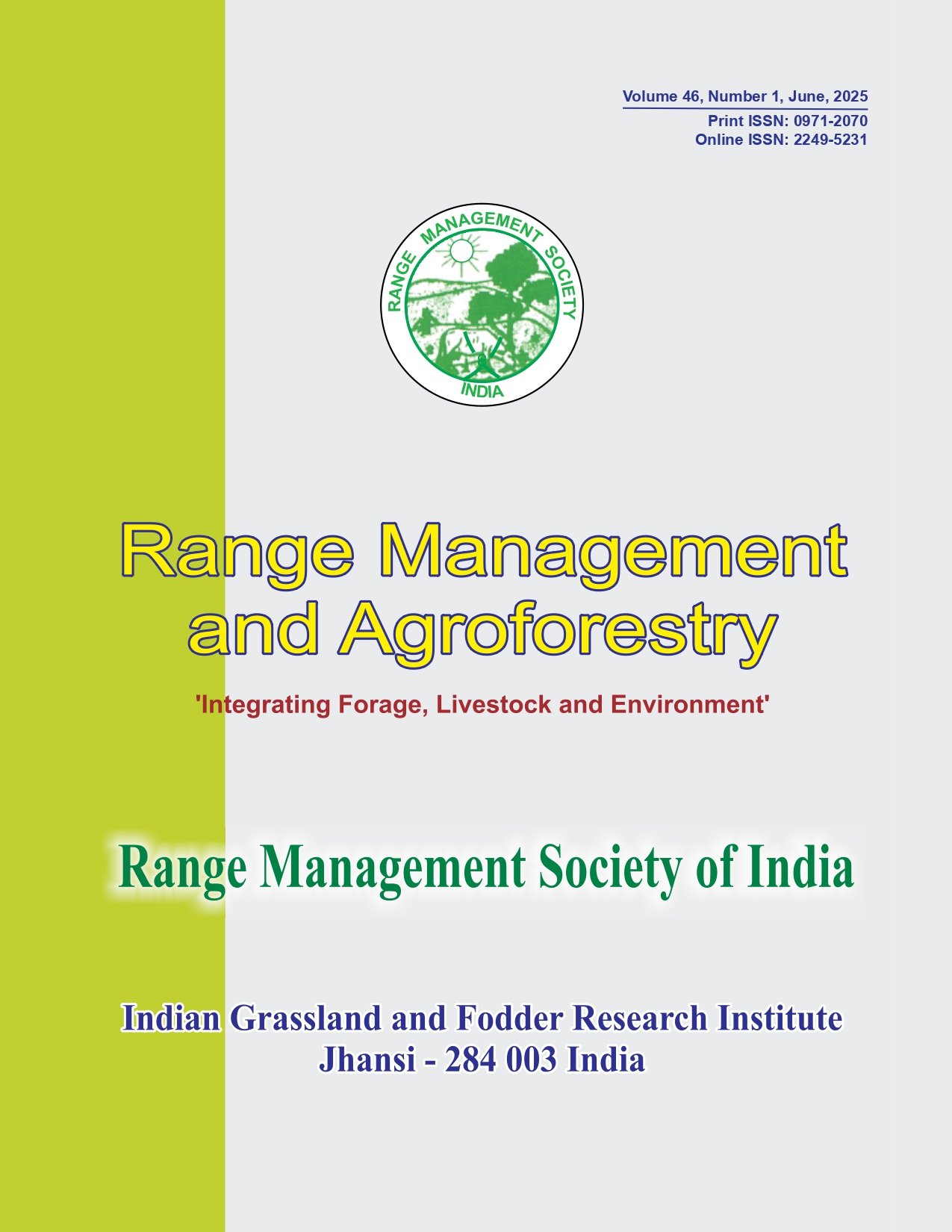Assessment of eighteen years old plantation of Azadirachta indica for biomass, nutrient accumulation and soil improvement in Entisols of Chhattisgarh, India
Keywords:
Azadirachta indica, Biomass, Growth, Nutrients, Soil ameliorationAbstract
Azadirachta indica was grown at 3 m x 3 m spacing in the upland of red lateritic soil in Chhattisgarh plain. The selected felling was made at 18 years of age to estimate the accumulation of biomass along with quantity of nitrogen, phosphorus, potassium and carbon stored in different component of trees. The survival rate of plantation was 45.05 percent from six years of plantations. After felling, all the tree components viz; bole, branch, twigs, foliage were separated manually, while main and lateral roots were dig out carefully after lightly moistened soil till the last end. Fresh weights of each component were recorded and dry weights were estimated by drying subsamples at 75o C in hot air oven. The growth rate in height, CD and DBH was 41.0, 1.25 and 0.99 cm, respectively up to 6 yrs while it was 24.0, 0.99 and 0.53 cm between 6 to 12 years growth period and 51.0, 0.43 and 0.76 cm, respectively between 12 to 18 years of growth period, where the total growth in height, CD and DBH was 7.43 m, 6.75 cm and 13.75 cm, respectively. The dry matter production for bole wood, bole bark, branch, twigs, foliage and root were found 28.86, 4.34, 22.70, 2.87, 3.31 and 18.78 kg tree-1, respectively with percentage share of biomass production was in the order of bole wood > branch > root > bole bark > foliage > twigs. The per tree total harvesting of NPK was found 267.15N, 74.7P and 1475.74K g tree-1 of above ground part while 93.9 g N, 12.46 g P and 559.6 g K was stored in below ground root parts, where C was sequestered 25.75 and 7.45 kg tree-1 in above and below ground parts, respectively of a tree. The improvement of soil condition under A. indica over 18 yrs of plantation showed decline in pH by 2.52% toward acidic portfolio, while WHC, organic carbon and available NPK were increased by 13.52, 57.63, 61.35, 172.10 and 16.13%, respectively as compared to adjacent open barren land.




